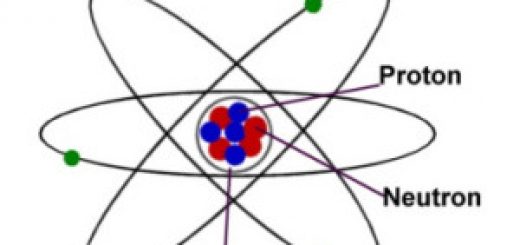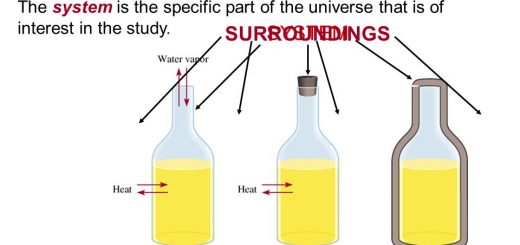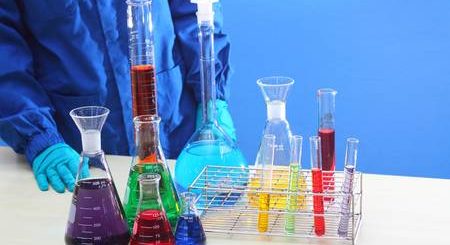Hydrocarbon derivatives, Ethanol, Alcohols Nomenclature, Classification and uses
Ethanol is very important as a fuel & in chemical industries, High taxes are paid for the production of alcohol (96%), because it is used in alcoholic liquors which has a harmful effect on health, Some additives are added to ethanol to be used as fuel & it is sold at a low price, These additives can’t be easily separated from alcohol except with very complicated chemical process, besides it is illegal.
Hydrocarbon derivatives
Functional group is an atom or atomic group which is responsible for the physical and chemical properties of the organic compounds, Organic compounds were classified into groups, each one is characterized by a certain function group, Hydrocarbon derivatives consist of C, H and O such as Alcohols, Phenols, Ethers, Aldehydes, Ketones and Esters.
Hydrocarbon derivatives consist of C, H and N such as Amines, (−COOH) group is named carboxylic group because it is composed of carbonyl group and hydroxyl group, The functional or the characteristics group is a group of atoms that combine together by a certain way to form a part of the molecule, However, its activity overcomes all the other properties of the whole molecule.
Alcohols and phenols
Alcohols and phenols are organic compounds, their molecules contain one or more hydroxyl group, If the hydroxyl group is attached to an alkyl group (R), so the compound is called alcohol, If the hydroxyl group is attached to Aryl group (Ar), so the compound is called phenol, Aliphatic Alcohols are the organic compounds which have a general formula ROH, The organic compounds which have a general formula ArOH are phenols.
Alcohols and phenols are considered as alkyl or aryl derivatives of water by replacing one hydrogen atom in water molecule by an alkyl or aryl group, they may also be considered as hydroxyl derivatives of the aliphatic or aromatic hydrocarbons by replacing one or more hydrogen atom by one or more hydroxyl group.
Alcohols
Alcohols are organic compounds that are characterized by the presence of one hydroxyl group or more as a functional group in the molecules, Alcohols are considered as derivatives of water by replacing hydrogen atom in water by an alkyl group, Alcohols are considered as derivatives of the aliphatic hydrocarbons (alkanes) by replacing hydrogen atom or more by one or more hydroxyl group.
Nomenclature of Alcohols
There are two methods: According to alkyl group is called alkyl alcohol, According to IUPAC is called alkanol, In this system, the hydrocarbon chain is numbered from the nearest end to the hydroxyl group.
According to the alkyl group (Common nomenclature): In this method, the alcohol is named according to the name of alkyl group present in the alcohol molecule, The world alcohol is added to the name of the alkyl group such as methyl alcohol CH3OH, ethyl alcohol C2H5OH, The name (iso) is used if the carbon atom of (OH) group is attached to two carbon atoms.
The nomenclature according to IUPAC: The name of alcohol is derived from the name of the corresponding alkane (alkane which contains the same number of carbon atoms) then adding the suffix (ol) instead of (e) such as CH3OH methanol, C2H5OH ethanol, in this system, the carbon chain is numbered from the nearest end to the hydroxyl group (OH), From pentane we can derive 3 different isomeric alcohols.
Classification of Aliphatic Alcohols
Alcohols are classified according to the number of hydroxyl groups (OH) in the alcohol molecule into four types:
- Monohydric Alcohol contains one OH group such as Methanol (CH3OH), Ethanol (C2H5OH).
- Dihydric Alcohol contains two OH groups such as Ethylene glycol (C2H4(OH)2).
- Trihydric Alcohol contains three OH groups such as Glycerol (C3H5(OH)3).
- Polyhydric Alcohol contains more than OH groups such as Sorbitol (C6H8(OH)6).
Aliphatic Monohydric Alcohols
Aliphatic monohydric alcohols are classified according to a number of hydrogen atoms and alkyl group attached to the carbinol (carbon atom linked to OH group), The general formula of monohydric alcohol is CnH2n+1OH or CnH2n+2O, Monohydric alcohols are classified into three kinds according to the type of the carbon atom attached to the hydroxyl group which is called the carbinol atom.
- Primary alcohols: carbinol group attached to one carbon atom and two hydrogen atoms such as Ethyl alcohol or Ethanol (C2H5OH).
- Secondary alcohols: carbinol group attached to two carbon atoms and one hydrogen atom such as sec. propyl alcohol or 2-propanol or isopropyl alcohol.
- Tertiary alcohols: carbinol group attached to three carbon atoms such as 2-methyl 2-propanol or tertiary butyl alcohol.
The carbinol is the carbon atom which is attached to the hydroxyl group, In primary monohydric alcohol, Carbinol carries one alkyl group and two hydrogen atoms, In secondary monohydric alcohol, carbinol carries two alkyl groups and one hydrogen atoms, In tertiary monohydric alcohol, carbinol carries three alkyl group and no hydrogen atoms.
Isobutyl alcohols is secondary alcohol because the carbinol group attached to two carbon atoms and one hydrogen atom, 2-butanol alcohol is secondary alcohol because the carbinol group attached two alkyl groups and one hydrogen atom.
1-propanol is primary alcohol while 2-propanol is a secondary one because the carbinol group of 1-propanol is attached to two hydrogen atoms and one carbon while 2-propanol is attached to a hydrogen atom and two carbon atoms.
Ethanol (C2H5OH)
Ethanol (Ethyl alcohol) is considered the oldest organic compound prepared in industry, Ancient Egyptians prepared alcohol before 3000 years ago by the fermentation process of sugar materials and starch.
Methods of preparation of Ethanol (in industry)
By alcoholic fermentation
Fermentation of sugary substance and starch (Conc. 96%): 20% of ethanol is produced all over the world by alcoholic fermentation process of starch and sugar materials especially countries which are rich in the cultivating of sugar-cane, beet and maize, Alcoholic fermentation is the addition of yeast fungus to molasses (sucrose) to form ethanol.
In Egypt, Ethanol is prepared from molasses (sucrose) ( in the Egyptian Sugar, Distillation Company in Howamdeia), The fermentation process takes place by the addition of yeast to molasses (sucrose) where ethanol and carbon dioxide gas are formed as follows:
C12H22O11 (s) + H2O(l) → C6H12O6(aq) + C6H12O6 (aq)
C6H12O6 (aq) → 2C2H5OH(l) + 2CO2 (g)
Hydration of ethane
Preparation of Ethanol from Ethylene Gas (catalytic hydration of ethane): By catalytic hydration of ethylene gas which is produced from cracking of petroleum raw material, It is the common method for the preparation of ethanol, It is carried out in most of the petroleum countries, By thermal cracking of long-chain petroleum materials, ethane is obtained.
Catalytic hydration of ethane with diluted sulphuric or phosphoric acid, ethanol is obtained, Therefore, Ethanol is considered as a petrochemical compound (chemicals that produced from petroleum) because it is obtained by catalytic hydration of ethylene gas which is produced from the thermal cracking of long-chain petroleum materials.
Petroleum product (cracking)→ C2H4 + H2O → C2H5OH (Ethanol)
Hydration is the addition of water to ethene in the presence of phosphoric or sulphuric acid, Ethene is the only alkene which gives primary alcohol by catalytic hydration, while the other alkenes give secondary or tertiary alcohols (Markownikoff’s rule).
The converted alcohol (or red spirit)
It is 85% ethanol of 96% concentration mixed with 5% methanol which is a poisonous substance that causes madness & blindness to prevent its use as a drink, pyridine, and bone oil (bad smell substance to prevent its use in perfumes) and dyes to use it in painting wood and it is used as a fuel.
Pure ethanol of 96% concentration is expensive because of the high production tax which should be paid for it, This is imposed to minimize its use in making alcoholic liquors because of their harmful effect on health and social aspects, However, ethanol is very important as fuel and in the chemical industries and organic solvents.
The converted alcohol (red spirit) is the ethanol with the additives of poisonous methanol, pyridine (bad odour), coloured dyes and water to be used as fuel, It is composed of 85% Ethanol (96% conc. + 5% methanol +1% ( pyridine, bone oil, or dyes) and the rest is water).
Preparation of alcohols
Alcohols can be prepared by heating the alkyl halides with the aqueous solution of strong alkalies, where the halide radical is replaced by the hydroxyl group and the corresponding alcohol is formed.
C2H5Br + H2O→ C2H5OH + HBr
Replacement of halogen by hydroxyl group is slow and this reaction is reversible, In the hydrolysis of alkyl halides, aqueous alkalies should be added to increase the rate of hydrolysis and neutralize the acid formed (HX) and prevent the reversible reaction.
All types of alcohols may be prepared by this method by using the corresponding alkyl halide, Halides may be arranged in the following sequence according to the ease of displacement, Hydrolysis of alkyl halides depend on the nature of halogen as Chlorides < bromides < iodides.
Alkyl iodide is the preferred alkyl halide used to obtain alcohols by means of hydrolysis in alkaline medium because (Cl, Br and I) are in the same group and the atomic radius of iodine is the largest one which is easily separated.
General properties of Benzene, How the detergents remove spots and dirties
Physical properties of Alcohols & How you detect the taking of drivers for liquors (alcohol)



